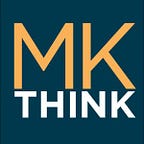MatriArchitecture
“The straight line is godless and immoral,” professed the artist and architect Friedensreich Hundertwasser. A forerunner of environmentalism, he denounced the “dictate of geometrical straight lines and sterile grid systems that hurt nature and man” and “lead to the downfall of humanity.” He championed for life in harmony with the laws of nature and its “non-regulated irregularities”.
We have science to blame for this dictate. The theories of Galileo, Darwin, and Newton, among others, advanced a “non-living, coldly mechanical model of the universe” and presented life as a linear process of decay”. This mechanical worldview took hold of the collective conscious and replaced the “’hypothesis’ of God” and “any notion of Nature” with the drive for technological progress and material prosperity. Modern architecture, with its straight lines and grid systems, mirrors this mechanical worldview. Skyscrapers and bridges exemplify it best. Their structures impose upon the natural landscape with sharp lines that clearly demarcate the human from the natural world. Temples to technology and industry, they represent the triumph of science and commerce over Nature and God.
Case in point, the Brooklyn Bridge. It “was made of physics [and] embodied a literal and genuinely religious leap of faith in 19th century American engineering”. Built in 1883, it marked the beginning of an era in which the most monumental structures were commercial, not religious. Spanning the East River to connect the Manhattan and Brooklyn, the Brooklyn Bridge made New York City the most significant commercial center in the United States, and ultimately the world.
A Darwinian competition in New York for the title of “world’s tallest building” gave rise to the Empire State Building. Owing to the support of 3-D grid systems of steel columns and beams and the financing of Pierre du Pont, it reached the winning height and held the title for 42 years. The building’s name alludes to New York State’s empire-worthy wealth and (exploitable) natural resources, celebrating the survival of the fittest, technological progress, and industry incarnate.
Before “science was raised to the status of a secular priesthood,” early civilizations formed their mental models of the universe from revelation not research . They held cycical worldviews, rooted in the natural world and its circadian and seasonal rhythms. The central role that woman played in reproduction inspired a belief in the divine feminine and the worship of mother goddesses who personified nature, fertility, and creation.
Recent architecture has seen the return of feminine and organic forms in buildings with fluid features that rebel against the “dictate of straight lines”. Renzo Piano’s California Academy of Sciences resembles the round burial mounds found in many early civilizations.
Foster + Partners’ Virgin Galactic Terminal at Spaceport America exudes femininity with soft contours that blend seamlessly into the surrounding landscape. The building calls to mind the natural landscapes and feminine symbology in the art of Georgia O’Keefe. And like the Megalithic Temples of Malta, its entrance is through a womb-like “gorge cut from the building’s circular ellipse.”
These buildings are feminine not only in form but also in their functional imitation of (Mother) Nature. They are living systems, “intelligently designed” to naturally regulate temperature, filter water and air, and generate energy. They are models of green building: California Academy of Sciences is LEED-Platinum certified; Virgin Galactic Terminal, LEED-Gold. Green building is in essence the architectural practice of spiritual ecology — the field that joins ecology and environmentalism with the awareness of the sacred within creation. Spiritual ecology (long practiced by indigenous peoples) is a response to the environmental crisis. It calls for a reexamination of our mechanistic worldview and a spiritual reconnection to nature. While green building may emphasize science and engineering, it tacitly acknowledges the sacred in its imitation of nature’s design.
MKThink’s “informed creativity” is also spiritual ecology in practice. It unifies data and the spiritual nature of creativity. In its architectural work, MKThink considers the buildings’ connection to the environment and by extension that of its human users. The Harmony Building is one example. It mimics the Ohio River Bluffs with engineering systems that emulate the watershed that naturally filters water and air. It brings the Ohio River Bluffs to the urban center to connect the citizens of Louisville to Kentucky’s natural landscape.
In the design of workplaces, MKThink replaces the grid systems of cubicle farms with layouts that adapt to the rhythms of the workday. These fluid configurations are spatially matriarchal and nurture a professional ecosystem that values collaboration over competition and flat organizational structure over hierarchy. These layouts reflect the increasing shift in business from aggressive, linear competition to the virtuous cycles of cooperation found in natural ecosystems. Hundertwasser’s would no doubt endorse spiritual ecology and MKThink’s own “informed creatitiy,” for these practices are realizing his vision of a cyclical and “stable relationship between man, the built world and nature” .
Sources
- “About Spiritual Ecology.” Spiritual Ecology. Retrieved August 10, 2015 from: http://spiritualecology.org/about-spiritual-ecology
- Hundertwasser, Friedensreich. The Five Skins of Man. 1998.
- Kuhlmann, Dörte. Gender Studies in Architecture: Space, Power, and Difference. New York: Routledge, 2013.
- Perry, John. “The View from the Brooklyn Bridge in response to the Five Imperatives for Electronic Trade.” March, 1995.
- Sahtouris, Elisabet PhD. “The Biology of Business: New Laws of Nature Reveal a Better Way for Business.” VIA Jounral, Volume Three, Number One, Summer 2005.
